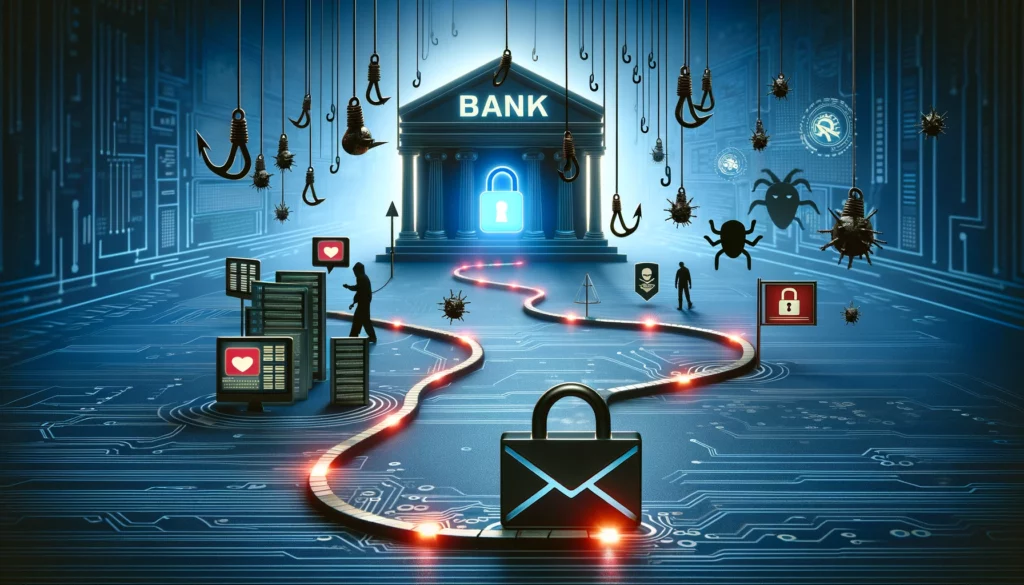In today’s digital age, the security of sensitive financial information is extremely important, especially when conducting online banking transactions. With cyber threats constantly evolving, it’s essential to implement robust security measures to protect banking data from unauthorized access and interception by malicious actors. One of the most powerful tools in the cybersecurity arsenal is encryption. In this blog post, we’ll explore encryption and how it serves as a formidable barrier against threats, safeguarding your banking data and ensuring the confidentiality and integrity of your financial transactions.
What is Encryption?
Encryption is a process of encoding information in such a way that only authorized parties can access and decipher it. It involves converting plaintext data into ciphertext using cryptographic algorithms and keys, rendering it unreadable to anyone without the corresponding decryption key. Encryption ensures that sensitive information remains confidential and secure, even if intercepted by unauthorized entities.
How Encryption Protects Your Banking Data:
- Data Confidentiality: Encryption plays a crucial role in maintaining the confidentiality of your banking data. When you initiate a banking transaction or access your account online, sensitive information such as account numbers, passwords, and transaction details are encrypted before being transmitted over the internet. This encrypted data is indecipherable to cybercriminals and unauthorized entities, ensuring that your financial information remains confidential and protected from eavesdropping or interception.
- Secure Communication Channels: Encryption creates secure communication channels between your device and banking servers, protecting data in transit from potential interception or tampering. By encrypting data using strong cryptographic algorithms, such as AES (Advanced Encryption Standard) or TLS (Transport Layer Security), banks and financial institutions ensure that sensitive information is transmitted securely over the internet, safeguarding against man-in-the-middle attacks and other interception-based threats.
- Protection Against Data Breaches: In the event of a data breach or unauthorized access to banking systems, encryption serves as a crucial line of defense against data theft. Even if cybercriminals manage to infiltrate a bank’s servers or databases, encrypted data remains unreadable without the corresponding decryption keys. This mitigates the impact of data breaches and reduces the risk of sensitive financial information falling into the wrong hands.
- Compliance with Regulatory Standards: Encryption is often mandated by regulatory standards and compliance frameworks, such as PCI DSS (Payment Card Industry Data Security Standard) and GDPR (General Data Protection Regulation). Banks and financial institutions are required to encrypt sensitive financial data to ensure compliance with these regulations and protect customer privacy. By implementing encryption, banks demonstrate a commitment to safeguarding customer information and maintaining compliance with industry standards.
Best Practices for Banking Data Encryption:
- Use Strong Encryption Algorithms: Employ robust encryption algorithms, such as AES or RSA (Rivest-Shamir-Adleman), to encrypt sensitive banking data. These algorithms offer strong cryptographic security and are widely recognized for their effectiveness in protecting data confidentiality.
- Secure Key Management: Implement secure key management practices to protect encryption keys from unauthorized access or compromise. Use encryption key management systems to securely generate, store, and distribute encryption keys, ensuring that only authorized parties have access to them.
- Implement End-to-End Encryption: Utilize end-to-end encryption protocols to encrypt data from the point of origin to the destination, ensuring that data remains encrypted throughout the entire transmission process. This prevents intermediaries or third parties from intercepting or tampering with sensitive information.
- Regularly Update Encryption Protocols: Stay updated with the latest encryption protocols and standards to ensure the effectiveness of encryption mechanisms. Regularly update encryption protocols, such as TLS, to mitigate vulnerabilities and address emerging threats in the encryption landscape.
In conclusion, encryption plays a vital role in protecting your banking data from cyber threats and ensuring the confidentiality and integrity of your financial transactions. By encrypting sensitive information using strong cryptographic algorithms, banks and financial institutions create secure communication channels, protect against data breaches, and maintain compliance with regulatory standards. As banking customers, it’s essential to understand the importance of encryption and how it safeguards your financial information in an increasingly digitized world. By embracing encryption best practices and staying informed about the latest developments in encryption technology, you can confidently conduct online banking transactions knowing that your data is secure and protected.

Penetra Cybersecurity is at the forefront of defending the digital frontier, providing cutting-edge solutions to protect businesses and organizations from the ever-evolving threats of the cyber world. Established with a mission to create a safer internet for everyone, Penetra leverages a blend of advanced technology, expert knowledge, and proactive strategies to stay ahead of cybercriminals.
Ready to take the next step towards a more secure future? Schedule a consultation with us today and discover how we can help protect what matters most to you. Don’t wait until it’s too late—with Penetra Cybersecurity, your business isn’t just secure; it’s imPenetrable.




